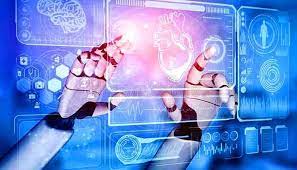
Role of AI Agents in Automated Image Annotation for Medical
For the effective care of patients, it is critical to interpret medical images accurately and in a timely manner. In order to analyze these images, radiologists are essential, but the process can be time-consuming and prone to human error.
A transformative solution has been created by the advancement of artificial intelligence (AI) in the field of automated image annotation in recent years. The use of AI agents for image annotation can assist in improving the accuracy and efficiency of medical diagnosis.
Artificial intelligence will be discussed in the article as its potential to improve patient outcomes through automated image annotation.
Table of Contents
Image annotations have a significant role to play in medical diagnosis:
Marking and identifying specific regions or abnormalities within medical images is known as image annotation. Annotated images are used by radiologists to make diagnostic and treatment decisions. This is the first step in the diagnosis process. Aside from providing diagnostic information, image annotation also assists in the detection of diseases, identifying tumors, lesions, anatomical structures, and other abnormalities. Moreover, researchers, educators, and clinicians can use annotated images for collaborative education and research.
Limitations and challenges associated with traditional approaches:
Image annotation has traditionally been performed manually by radiologists who spend considerable time reviewing images and marking the relevant areas on them. Labor-intensive and time-consuming, this process is susceptible to variance between observers as well as inter-observer variability. A further challenge and resource-intensive aspect of manual annotation is the rising volume of medical imaging data. AI agents have been integrated into the image annotation process as a result of a need for a more efficient and standardized approach.
Automated Image Annotation: The Role of Artificial Intelligence Agents:
The application of artificial intelligence to image annotation has been revolutionized by the use of machine learning and deep learning algorithms. Annotated medical image data can be used as training material for these agents, enabling them to learn and recognize patterns, features, and abnormalities. These insights enable AI agents to provide accurate and consistent annotations of medical images based on medical images. By automating the annotation process, radiologists are able to concentrate on higher-level analysis and diagnosis.
An Automated Image Annotation System will benefit from AI Agents:
- A medical image can be analyzed and annotated much more quickly by AI agents as compared to manual annotations. As a result of this efficiency, radiologists are able to handle larger volumes of imaging data, thereby allowing them to diagnose and plan treatments more efficiently.
- With the help of massive datasets, artificial intelligence agents are able to identify even subtle abnormalities with a high degree of accuracy. The automatic annotation of images reduces the probability of human error and interobserver variability by guaranteeing consistency in interpretation.
- Access to specialized expertise from anywhere: AI agents can annotate images remotely, making it easier to access specialized expertise no matter where the user is located. Greater access to quality healthcare is possible through telemedicine and remote consultations.
- An AI agent’s annotation capabilities are continually improved over time as a result of learning from new data. By adapting to new findings, changing medical knowledge, and changes in imaging technology, they ensure the accuracy and reliability of their annotations.
- In order to obtain clinical guidelines, references, and comparative analyses, radiologists will be able to integrate AI agents with decision support systems. Radiologists are able to make more informed diagnostic decisions with the assistance of augmented intelligence, which in turn leads to a more successful treatment outcome.
Implications and Conclusions for the Future:
AI agents are poised to play a significant role in automated image annotation for medical diagnosis in the near future. In the future, automated image annotation will become more accurate and efficient as technology advances and AI algorithms become more sophisticated. The time is near when AI agents will revolutionize medical diagnosis in more than one way. This includes enhancing patient care quality and streamlining image annotation.
As we gaze into the future, the integration of artificial intelligence (AI) agents into automated image annotations holds immense potential for advancing medical diagnosis. Ongoing research and development in the field of AI are exploring innovative techniques, such as deep learning algorithms and neural networks, to enhance the capabilities of AI agents. These advancements will empower AI agents to identify and annotate even the most intricate abnormalities in medical images with greater precision and efficiency.
Moreover, AI agents can be combined with emerging technologies like natural language processing and data mining to further enhance the diagnostic process. By analyzing not only images but also pertinent patient data and medical literature, AI agents can assist radiologists in making more accurate and well-informed diagnoses.
It is crucial to remember that while AI agents offer numerous advantages, they are not intended to replace radiologists. Instead, they provide healthcare professionals with valuable tools to augment their expertise and decision-making abilities. Radiologists remain responsible for interpreting and validating the annotations generated by AI agents to provide accurate diagnoses and appropriate treatment plans.
Therefore, the automated image annotation of medical images through AI agents is becoming increasingly significant, leading to a profound transformation of the radiology field. Machine learning and deep learning algorithms enable AI agents to deliver precise and consistent annotations, thereby improving the efficiency and accuracy of medical condition diagnoses.
As AI agents become more prevalent, it is expected that the analysis and interpretation of medical images will undergo a revolution, resulting in improved patient outcomes and enhanced healthcare delivery systems. Further advancements and the integration of AI agents with other technologies will likely revolutionize the way medical images are analyzed and interpreted.
As the healthcare industry continues to embrace the power of AI, it is imperative to establish robust frameworks and guidelines for the ethical and responsible use of AI agents in medical diagnosis. Collaborative efforts between AI developers, radiologists, and regulatory bodies are essential to ensure the safe and effective integration of AI technologies into clinical practice.
In the forthcoming years, we anticipate continued progress in AI-driven image annotation and its application in medical diagnosis. The potential for improved accuracy, efficiency, and accessibility is promising, paving the way for a future where AI agents play a vital role in enhancing radiology and revolutionizing healthcare delivery.
June 27, 2023

















